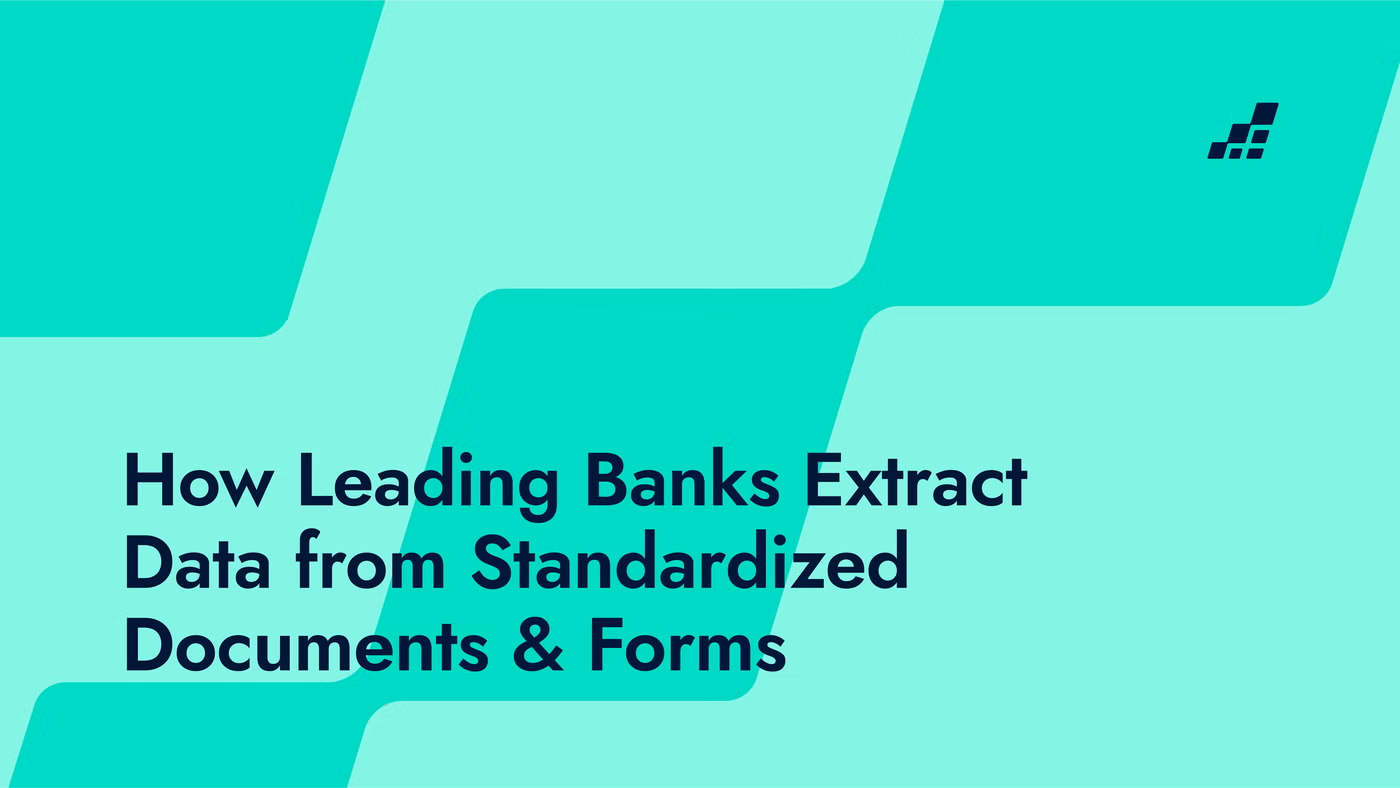- /
- Blog
How Leading Banks Extract Data from Standardized Documents & Forms

Admin in banking can feel like a never-ending slog. From processing K-1 packages to verifying IDs like driver's licenses, the sheer volume of manual data entry can make even the most patient banker question their career choices.
These tasks aren’t just monotonous—they’re a classic example of a low-skill, high-effort process that eats away at productivity and leaves little room for innovation.
While industries like healthcare and retail are revolutionizing their workflows with cutting-edge tech, some areas of banking still cling to outdated practices. And yet, the demand for speed and accuracy in data processing has never been higher.
Let’s explore the biggest challenges of manual data extraction in banking.
The Challenges of Manual Data Extraction in Banking
Manual data extraction is one of the biggest bottlenecks in banking operations. Despite its importance, relying on manual processes can lead to several challenges:
- Time-Consuming Workflows: Parsing unstructured data from documents like K-1 packages or ID forms is a labor-intensive process that slows down straight-through processing (STP) and delays decision-making.
- Increased Risk of Data Entry Errors: Relying on manual processes heightens the risk of transcription errors, compromising data integrity and leading to potential regulatory compliance issues.
- High Operational Costs: Manual workflows require a disproportionate allocation of resources, increasing costs per transaction while limiting scalability.
- Scalability Limitations: As document volumes grow, linear scaling of manual processes becomes infeasible, creating bottlenecks in peak periods such as quarter-end or tax season.
- Inconsistent Data Standardization: Variations in document layouts and formatting hinder normalization and structured data extraction, making downstream data integration with systems like ERPs or CRMs challenging.
- Reduced Workforce Productivity: Repetitive, non-value-added tasks reduce employee focus on strategic, high-impact activities like credit risk analysis or customer relationship management.
- Regulatory and Audit Risks: Failure to maintain an audit trail or accurately process documents exposes institutions to non-compliance fines and reputational damage.
These challenges highlight the need for efficient solutions that not only save time but also ensure data accuracy. Enter OCR (Optical Character Recognition) technology that is transforming how leading banks manage their data.
OCR Technology: A Revolution in Data Extraction
At its core, Optical Character Recognition (OCR) is the unsung hero of data extraction. OCR technology scans printed or handwritten text from documents and images, converting it into machine-readable data. By using pattern recognition and AI-powered algorithms, OCR doesn’t just "read" text—it digitizes it for seamless processing.
For banks, where documents like K-1 packages, driver’s licenses, and invoices are central to operations, OCR offers a practical solution to tedious manual work. It replaces the painstaking process of data entry with speed, accuracy, and scalability. However, not all OCR tools are the same. Basic solutions may simply scan text, leaving users to sort through it. Advanced OCR platforms, on the other hand, extract, organize, and reference critical data fields—streamlining workflows and improving accuracy.
Banks are now leveraging OCR to tackle tasks like:
- Processing K-1 packages: These standardized documents often require extracting specific fields from multiple pages.
- Verifying IDs: Scanning driver licenses, passports, or other forms of identification quickly while ensuring accuracy.
- Handling high-volume documents: Think invoices, contracts, and receipts—each with unique layouts but critical data points.
These solutions bridge the gap between manual effort and digital transformation, but what sets leading banks apart is how they apply this technology.
DataSnipper: Your Data Extraction Sidekick
Here’s where DataSnipper comes in. Think of it as a productivity multiplier—a platform designed to take the “ugh” out of data extraction and leave you with more time to focus on high-value tasks.
About Form Extraction
Having a robot assistant is the start of most auditor’s wildest dreams, right?
About Advanced Extraction Suite (AES)
Leading Banks Get Ahead
By adopting tools like DataSnipper, banks reduce reliance on manual effort, enhance accuracy, and speed up workflows. This means fewer errors, faster approvals, and happier teams—all while staying competitive in a rapidly evolving industry.


.png?width=600&quality=70&format=auto&crop=16%3A9)